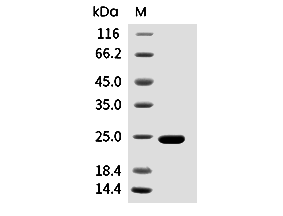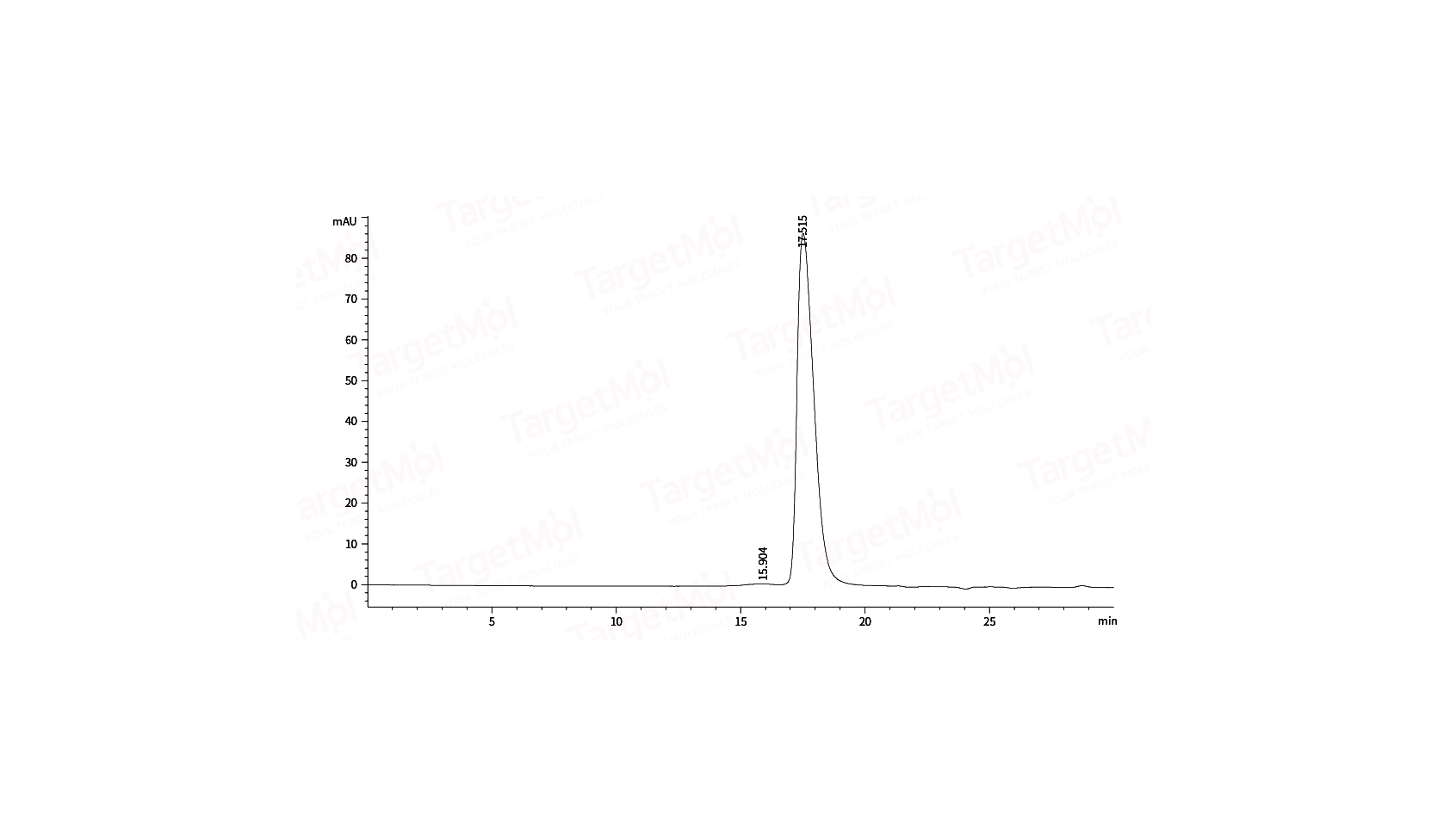- Remove All
 Your shopping cart is currently empty
Your shopping cart is currently empty
FGF-19 Protein, Human, Recombinant
FGF19, also known as FGF-19, is a member of the fibroblast growth factor (FGF) family. FGF family members possess broad mitogenic and cell survival activities, and are involved in a variety of biological processes, including embryonic development, cell growth, morphogenesis, tissue repair, tumor growth and invasion. FGF19 interacts with FGFR1, FGFR2, FGFR3 and FGFR4. Affinity between fibroblast growth factors (FGFs) and their receptors is increased by KL, KLB and heparan sulfate glycosaminoglycans that function as coreceptors. It interacts with KL and KLB directly. However, it interacts with FGFR4 in the presence of heparin, KL or KLB. FGF19 is involved in the suppression of bile acid biosynthesis through down-regulation of CYP7A1 expression, following positive regulation of the JNK and ERK1/2 cascades. It also stimulates glucose uptake in adipocytes.

FGF-19 Protein, Human, Recombinant
| Pack Size | Price | Availability | Quantity |
|---|---|---|---|
| 50 μg | $306 | In Stock | |
| 1 mg | $3,000 | 7-10 days |
Product Information
| Biological Activity | Activity testing is in progress. It is theoretically active, but we cannot guarantee it. If you require protein activity, we recommend choosing the eukaryotic expression version first. |
| Description | FGF19, also known as FGF-19, is a member of the fibroblast growth factor (FGF) family. FGF family members possess broad mitogenic and cell survival activities, and are involved in a variety of biological processes, including embryonic development, cell growth, morphogenesis, tissue repair, tumor growth and invasion. FGF19 interacts with FGFR1, FGFR2, FGFR3 and FGFR4. Affinity between fibroblast growth factors (FGFs) and their receptors is increased by KL, KLB and heparan sulfate glycosaminoglycans that function as coreceptors. It interacts with KL and KLB directly. However, it interacts with FGFR4 in the presence of heparin, KL or KLB. FGF19 is involved in the suppression of bile acid biosynthesis through down-regulation of CYP7A1 expression, following positive regulation of the JNK and ERK1/2 cascades. It also stimulates glucose uptake in adipocytes. |
| Species | Human |
| Expression System | E. coli |
| Tag | Tag Free |
| Accession Number | O95750-1 |
| Synonyms | fibroblast growth factor 19,FGF19 |
| Construction | A DNA sequence encoding the mature form of human FGF19 (O95750-1) (Phe27-Lys216) was expressed with a N-terminal Met. Predicted N terminal: Met |
| Protein Purity | ≥ 95 % as determined by SDS-PAGE. ≥ 95 % as determined by SEC-HPLC.   |
| Molecular Weight | 21.4 kDa (predicted); 23 kDa (reducing conditions) |
| Endotoxin | < 10 EU/mg of the protein. |
| Formulation | Lyophilized from a solution filtered through a 0.22 μm filter, containing PBS, pH 7.4. Typically, a mixture containing 5% to 8% trehalose, mannitol, and 0.01% Tween 80 is incorporated as a protective agent before lyophilization. |
| Reconstitution | A Certificate of Analysis (CoA) containing reconstitution instructions is included with the products. Please refer to the CoA for detailed information. |
| Stability & Storage | It is recommended to store recombinant proteins at -20°C to -80°C for future use. Lyophilized powders can be stably stored for over 12 months, while liquid products can be stored for 6-12 months at -80°C. For reconstituted protein solutions, the solution can be stored at -20°C to -80°C for at least 3 months. Please avoid multiple freeze-thaw cycles and store products in aliquots. |
| Shipping | In general, Lyophilized powders are shipping with blue ice. |
| Research Background | FGF19, also known as FGF-19, is a member of the fibroblast growth factor (FGF) family. FGF family members possess broad mitogenic and cell survival activities, and are involved in a variety of biological processes, including embryonic development, cell growth, morphogenesis, tissue repair, tumor growth and invasion. FGF19 interacts with FGFR1, FGFR2, FGFR3 and FGFR4. Affinity between fibroblast growth factors (FGFs) and their receptors is increased by KL, KLB and heparan sulfate glycosaminoglycans that function as coreceptors. It interacts with KL and KLB directly. However, it interacts with FGFR4 in the presence of heparin, KL or KLB. FGF19 is involved in the suppression of bile acid biosynthesis through down-regulation of CYP7A1 expression, following positive regulation of the JNK and ERK1/2 cascades. It also stimulates glucose uptake in adipocytes. |
Dose Conversion
Calculator
Tech Support

Copyright © 2015-2025 TargetMol Chemicals Inc. All Rights Reserved.


